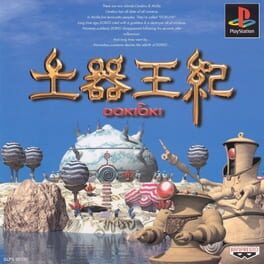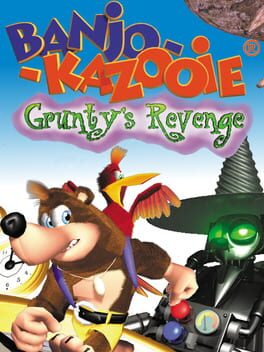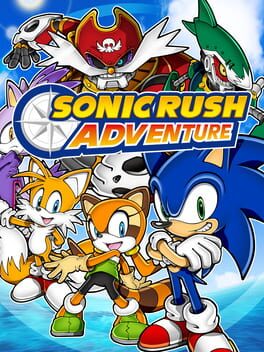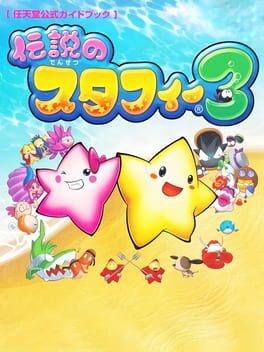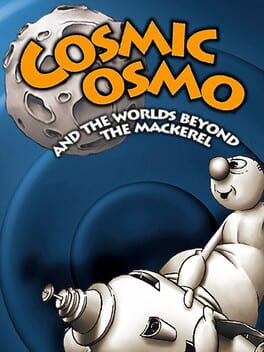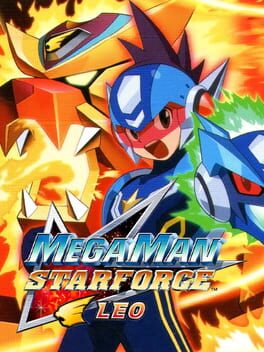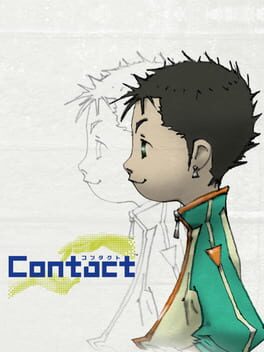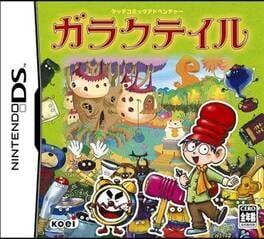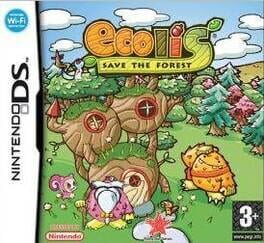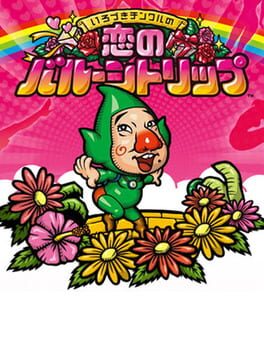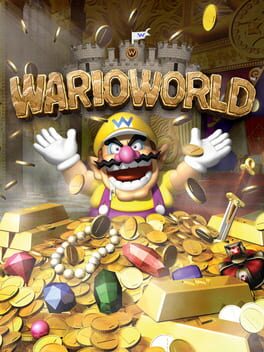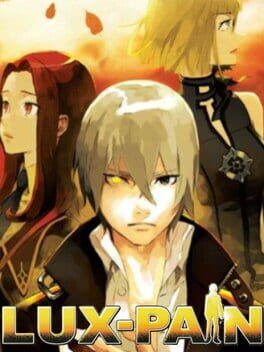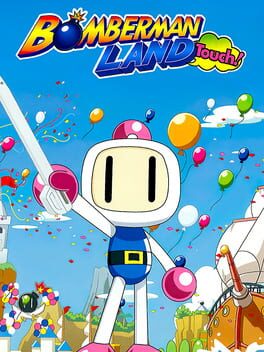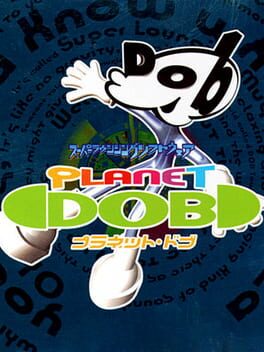DizzySkullKid19
2001
(Note: Played on Wii, but I logged the Gamecube version by mistake, so I'm just gonna write my review here.)
Pikmin has a lot of serenity, with it's beautiful music, charming natural environments, and last but not least, amazing water graphics. Despite all this, Pikmin isn't exactly a literal walk in the park. It's equally parts extremely relaxing, while also being an on the edge of your seat, nail-biting game, and this honestly is why I love it.
This is my first playthrough, and I only got the normal ending (which I'm happy for, by the way.) I missed out on 1 part, Olimar's beloved piggy bank. Pikmin purists, you can jump on my head like a Pikmin to a Snagret, but I'm still saying I completed this game. Doesn't mean I won't go back to play through it again, though. I definitely want to try and do better.
First let's start with the music, and art direction. For music, there is the incredible Forest of Hope OST, need I say more? The art direction is incredibly charming, the enemy designs are quite unique, and often goofy in a good way. Each has their own mannerisms, which is amazing and really builds the idea of this being a real ecosystem. The environments themselves are beautiful. While I don't think they are Gamecube limit-pushers, they are still beautiful. The shades of light and dark in each area are what create a lot of the vibe. With the areas being natural green and Olimar's ship parts being artificial chrome or other coloration, which creates a cool contrast. Also, the water graphics.
I'm bad at strategy and resource/time-management, but this is probably the most fun I've had with it. Like I said, it's no walk in the park on your first run through, but I believe you can do it.
A small complaint to add to others critiques: It would be nice if there was an option to view past dialogue from Olimar, because it's really easy to skip out on the intro tutorials because you were mashing B. I also don't know if it lists what parts are necessary in the game itself, I couldn't find that. I had to search online. That would make the game a little easier, although it's difficulty is part of it's charm.
Highly recommended you play it anyway you can.
Pikmin has a lot of serenity, with it's beautiful music, charming natural environments, and last but not least, amazing water graphics. Despite all this, Pikmin isn't exactly a literal walk in the park. It's equally parts extremely relaxing, while also being an on the edge of your seat, nail-biting game, and this honestly is why I love it.
This is my first playthrough, and I only got the normal ending (which I'm happy for, by the way.) I missed out on 1 part, Olimar's beloved piggy bank. Pikmin purists, you can jump on my head like a Pikmin to a Snagret, but I'm still saying I completed this game. Doesn't mean I won't go back to play through it again, though. I definitely want to try and do better.
First let's start with the music, and art direction. For music, there is the incredible Forest of Hope OST, need I say more? The art direction is incredibly charming, the enemy designs are quite unique, and often goofy in a good way. Each has their own mannerisms, which is amazing and really builds the idea of this being a real ecosystem. The environments themselves are beautiful. While I don't think they are Gamecube limit-pushers, they are still beautiful. The shades of light and dark in each area are what create a lot of the vibe. With the areas being natural green and Olimar's ship parts being artificial chrome or other coloration, which creates a cool contrast. Also, the water graphics.
I'm bad at strategy and resource/time-management, but this is probably the most fun I've had with it. Like I said, it's no walk in the park on your first run through, but I believe you can do it.
A small complaint to add to others critiques: It would be nice if there was an option to view past dialogue from Olimar, because it's really easy to skip out on the intro tutorials because you were mashing B. I also don't know if it lists what parts are necessary in the game itself, I couldn't find that. I had to search online. That would make the game a little easier, although it's difficulty is part of it's charm.
Highly recommended you play it anyway you can.
1995
(Everything I express in this review is simply a personal opinion. Please do not get mad at me. People still have valid reasons to enjoy this game.)
Frankly, I didn't find this game too fun. I'm sorry. Even though I CAN still say it's a good game.
Note: the first part of my review is going to be kind of negative, but I had lots of things I liked about this game, so feel free to skip ahead.
I'm putting "played" here, because I can't say in good faith I've done everything in this game. I got right up to the final boss, but died at the second round, quit, and lost an hour of progress because I forgot to save. It brings me to a feature I would like: if it would save when you select "quit". However, I watched the final boss and ending, so in my mind I've seen everything I wanted to see with this game.
It's my first experience with Banjo-Kazooie. I might be starting off on the wrong foot here. Rare's other games have impressed me ( see the Donkey Kong Country series), which I find ingenious. This one, not so much.
Many have complained about the camera angle, but I just didn't find the core gameplay loop fun at all: collection felt mindless rather than rewarding. It was tiresome to backtrack to certain areas to get these puzzle pieces ("Jiggy's"), mostly because I didn't find the areas notable. Aesthetically, they were the artistic equivalent of Home Depot.
It suffered some from, I think, a lack of meaningful places and NPC's. I'm not asking for this game to be some kind of world building RPG, simply that it makes the areas fun to revisit. There are secrets in each place, sure, but a lot of them are monotonous, like (literally) grey sewage pipes. My favorite was this sand castle in the harbor area, which I found charming because it was made up of these small things that distinguished it from the previous area, the little background details: sea stars, candy wrappers and such, really helped break up the monotony a little, even added some character. The pre-rendered graphics I also found really worked towards a pleasing whole. It was really cool seeing all the little pre-rendered buildings, like the temple. Being able to go through the chimney into a luxurious hotel room, and see the little luxurious, tiger-striped bed, TV, and lamp in all it's pre-rendered glory, on a GBA no less, was a weird kind of liminal (to be pretentious) experience. It was little things like that, the details, that really made this one charming.
Part of the monotony could be broken also, by getting to know the people you meet in the game more. For example there is an ice cream vendor in a truck, maybe in the later worlds, they could come to visit Banjo and Kazooie later on with a new ice cream store. Or maybe they are starting a shaved ice business and getting ice from Freezing Furnace (the ice themed area). These are just examples. I think seeing how the world develops would be cool, of course within system limitations and all that. Maybe even have new plotlines that happen only after you finish an area and go back to it.
I want to try the other Banjo-Kazooie's, however. Simply because of the charm of the world in this one.
It is charming, for some reason the character design and art direction reminds me a little of Wallace and Gromit, in it's kind of playful and lightly caricaturized design (and it has animals with googly eyes, reminding me of Wallace and Gromit)
TLDR: My impressions of this game is that it IS worth trying, just wasn't for me. Partially because of my expectations: I went in expecting something deep, like a real lengthy story-based game. It's not exactly like that, far from a world building action-adventure.
However what this game excels at is it's whimsical, childlike sense of humor, and it's unique attempt at putting a series of 3D platformers on the GBA. If you love collect-athon gameplay, a childlike sense of whimsy, or pre-rendered graphics, I would recommend this to you, with some reservations.
Frankly, I didn't find this game too fun. I'm sorry. Even though I CAN still say it's a good game.
Note: the first part of my review is going to be kind of negative, but I had lots of things I liked about this game, so feel free to skip ahead.
I'm putting "played" here, because I can't say in good faith I've done everything in this game. I got right up to the final boss, but died at the second round, quit, and lost an hour of progress because I forgot to save. It brings me to a feature I would like: if it would save when you select "quit". However, I watched the final boss and ending, so in my mind I've seen everything I wanted to see with this game.
It's my first experience with Banjo-Kazooie. I might be starting off on the wrong foot here. Rare's other games have impressed me ( see the Donkey Kong Country series), which I find ingenious. This one, not so much.
Many have complained about the camera angle, but I just didn't find the core gameplay loop fun at all: collection felt mindless rather than rewarding. It was tiresome to backtrack to certain areas to get these puzzle pieces ("Jiggy's"), mostly because I didn't find the areas notable. Aesthetically, they were the artistic equivalent of Home Depot.
It suffered some from, I think, a lack of meaningful places and NPC's. I'm not asking for this game to be some kind of world building RPG, simply that it makes the areas fun to revisit. There are secrets in each place, sure, but a lot of them are monotonous, like (literally) grey sewage pipes. My favorite was this sand castle in the harbor area, which I found charming because it was made up of these small things that distinguished it from the previous area, the little background details: sea stars, candy wrappers and such, really helped break up the monotony a little, even added some character. The pre-rendered graphics I also found really worked towards a pleasing whole. It was really cool seeing all the little pre-rendered buildings, like the temple. Being able to go through the chimney into a luxurious hotel room, and see the little luxurious, tiger-striped bed, TV, and lamp in all it's pre-rendered glory, on a GBA no less, was a weird kind of liminal (to be pretentious) experience. It was little things like that, the details, that really made this one charming.
Part of the monotony could be broken also, by getting to know the people you meet in the game more. For example there is an ice cream vendor in a truck, maybe in the later worlds, they could come to visit Banjo and Kazooie later on with a new ice cream store. Or maybe they are starting a shaved ice business and getting ice from Freezing Furnace (the ice themed area). These are just examples. I think seeing how the world develops would be cool, of course within system limitations and all that. Maybe even have new plotlines that happen only after you finish an area and go back to it.
I want to try the other Banjo-Kazooie's, however. Simply because of the charm of the world in this one.
It is charming, for some reason the character design and art direction reminds me a little of Wallace and Gromit, in it's kind of playful and lightly caricaturized design (and it has animals with googly eyes, reminding me of Wallace and Gromit)
TLDR: My impressions of this game is that it IS worth trying, just wasn't for me. Partially because of my expectations: I went in expecting something deep, like a real lengthy story-based game. It's not exactly like that, far from a world building action-adventure.
However what this game excels at is it's whimsical, childlike sense of humor, and it's unique attempt at putting a series of 3D platformers on the GBA. If you love collect-athon gameplay, a childlike sense of whimsy, or pre-rendered graphics, I would recommend this to you, with some reservations.
2007
When I was a kid I had Sonic Rush, while my sister had Sonic Rush Adventure. We would trade between the games, so I would get little snippets of this one. I never played through it until now, however.
It's fast, hyperactive sonic fun, with clever level design. The boost mechanic carries over from the first game, and it works REALLY well. Like all sonic games, you get a sense of invincibility when you are going fast, until (sometimes weird) enemy placement forces you to pump the brakes. Hardly the best platformer on the DS, but you shouldn't overlook it either if you dig the Sonic formula.
Main complaints is that the story doesn't explain itself too well, but I wasn't exactly in it for the story, so that's alright. The music is another complaint. I might be asking too much for it to compare to the first Sonic Rush game, but I found it a little underwhelming. The tunes are catchy, don't get me wrong, but they feel like a pale imitation of Hideki Naganuma's work on the original.
It's fast, hyperactive sonic fun, with clever level design. The boost mechanic carries over from the first game, and it works REALLY well. Like all sonic games, you get a sense of invincibility when you are going fast, until (sometimes weird) enemy placement forces you to pump the brakes. Hardly the best platformer on the DS, but you shouldn't overlook it either if you dig the Sonic formula.
Main complaints is that the story doesn't explain itself too well, but I wasn't exactly in it for the story, so that's alright. The music is another complaint. I might be asking too much for it to compare to the first Sonic Rush game, but I found it a little underwhelming. The tunes are catchy, don't get me wrong, but they feel like a pale imitation of Hideki Naganuma's work on the original.
2004
When I was a kid, "The Legendary Starfy" for the DS had to be my favorite platformer and one of my favorite games ever. I have yet to review it here, though, which I will change shortly.
Everything about the unique music, atmosphere and surprisingly affecting story just blew me away.
It was only later that I learned that it was the fifth game in a long running series of platformers known as "Densetsu no Stafy". I had a mix of excitement that there was more to experience, and a feelings of indignance towards the fact that we were never treated to the rest of this series over here.
Now, as an adult equipped with a fancy ol' GBA, I can finally experience another Starfy game.
The first thing that stuck out to me was that the unique sounds of the music, and the absolute charm of the world, was still there. I'm amazed at how the series has kept much of it's identity throughout it's five installments. This one is just as surreal as the others too, with penguins with whips, a fish who looks like Frank Sinatra, and whatnot.
There is just an indefinable feeling to each of the Starfy games that is unique. There is something mysterious, almost nostalgic about it. I keep harping on the music (no pun intended) but man does it add to this vibe. I can't really explain it. It's just like a carefree summer day exploring nature as a kid.
It is also kinda carefree in other aspects, not just in aesthetics. In terms of gameplay, some may say that the game is on the easy side. I would agree, but I don't think this hinders the game at all. I still had a sense of progression. New mechanics were thrown in often, new moves. Also these weird pogo/horse/sheep segments (this'll make sense when you experience the game, I promise.)
Adding Starfy's sister, Stappie (at least that's her name in the walkthrough on gamefaqs) was a really nice move. I kind of feel like platformers can get almost egotistical at points. Many platformers don't stress much teamwork. This one has you switching between Starfy and his sister in these really neat segments where you have to play of each strengths in order to progress. Each one has different moves that only they can use to reach certain areas. It mixed up the gameplay just enough to where it never got tiring.
Despite me calling it carefree earlier, it is a game with plenty of dark aspects and conflict. It's not a game without loss, and I'll leave you to decipher that when you play it.
Now I played it entirely in Japanese, so I didn't follow the plot completely, but I could tell just enough of what was happening. However, like other reviewers have said, playing it in a language you are familiar with DOES really enhance your experience of the story. They also give clues in dialogue which you can't distinguish if you can't read them.
One last thing, there is also a cameo of a character from a game I just beat. It was awesome to see them do a homage to that character and his games. Once again, I won't spoil anything just incase people don't know.
Overall, highly recommend to those wanting an easy but interesting, surprisingly emotional and aesthetically charming platformer with unique mechanics.
Everything about the unique music, atmosphere and surprisingly affecting story just blew me away.
It was only later that I learned that it was the fifth game in a long running series of platformers known as "Densetsu no Stafy". I had a mix of excitement that there was more to experience, and a feelings of indignance towards the fact that we were never treated to the rest of this series over here.
Now, as an adult equipped with a fancy ol' GBA, I can finally experience another Starfy game.
The first thing that stuck out to me was that the unique sounds of the music, and the absolute charm of the world, was still there. I'm amazed at how the series has kept much of it's identity throughout it's five installments. This one is just as surreal as the others too, with penguins with whips, a fish who looks like Frank Sinatra, and whatnot.
There is just an indefinable feeling to each of the Starfy games that is unique. There is something mysterious, almost nostalgic about it. I keep harping on the music (no pun intended) but man does it add to this vibe. I can't really explain it. It's just like a carefree summer day exploring nature as a kid.
It is also kinda carefree in other aspects, not just in aesthetics. In terms of gameplay, some may say that the game is on the easy side. I would agree, but I don't think this hinders the game at all. I still had a sense of progression. New mechanics were thrown in often, new moves. Also these weird pogo/horse/sheep segments (this'll make sense when you experience the game, I promise.)
Adding Starfy's sister, Stappie (at least that's her name in the walkthrough on gamefaqs) was a really nice move. I kind of feel like platformers can get almost egotistical at points. Many platformers don't stress much teamwork. This one has you switching between Starfy and his sister in these really neat segments where you have to play of each strengths in order to progress. Each one has different moves that only they can use to reach certain areas. It mixed up the gameplay just enough to where it never got tiring.
Despite me calling it carefree earlier, it is a game with plenty of dark aspects and conflict. It's not a game without loss, and I'll leave you to decipher that when you play it.
Now I played it entirely in Japanese, so I didn't follow the plot completely, but I could tell just enough of what was happening. However, like other reviewers have said, playing it in a language you are familiar with DOES really enhance your experience of the story. They also give clues in dialogue which you can't distinguish if you can't read them.
One last thing, there is also a cameo of a character from a game I just beat. It was awesome to see them do a homage to that character and his games. Once again, I won't spoil anything just incase people don't know.
Overall, highly recommend to those wanting an easy but interesting, surprisingly emotional and aesthetically charming platformer with unique mechanics.
Cosmic Osmo is a game I have marked as played, because for one I would feel weird saying I completed the game after my game time clocking in at about 2 and a half hours, and two for the fact that you can't really beat this game.
I first got curious about it after reading somewhere that the creator of Garage: Bad Dream Adventure apparently was influenced by it.
I admit, I don't know about the history of videogames to point to this being one of the first games that are more experiences rather than goals. Although I have yet to play it, I imagine the The Manhole, which was released before this game and by the same developer, might be more worthy of that mantel.
It's a game that really disorients your sense of space, something they had to have taken from Alice and Wonderland. Like Alice, Osmo is constantly growing big or small, randomly fitting through tiny spaces without explanation. A painting turns into a hallway that turns into a government office.
Everything is drawn in a simple, stylized, yet detailed way. The fact that it's in monochrome doesn't detract from the experience at all. It ignites your imagination.
TLDR: Cosmic Osmo is a bit of an oddball game. It's one of the early games without goals, more focused on exploration. It is heavy stylized and witty, reminding me of a sunday morning newspaper comic, with a touch of surrealism. It will surely entertain anyone willing to give a try to something unexpected. Being only 6 dollars, at most, on Steam (and it's currently marked down as of the 2023 Summer Sale), it won't hurt to try it. Our shapeshifting Osmo with an odd sense of humor might reignite your sense of discovery.
I first got curious about it after reading somewhere that the creator of Garage: Bad Dream Adventure apparently was influenced by it.
I admit, I don't know about the history of videogames to point to this being one of the first games that are more experiences rather than goals. Although I have yet to play it, I imagine the The Manhole, which was released before this game and by the same developer, might be more worthy of that mantel.
It's a game that really disorients your sense of space, something they had to have taken from Alice and Wonderland. Like Alice, Osmo is constantly growing big or small, randomly fitting through tiny spaces without explanation. A painting turns into a hallway that turns into a government office.
Everything is drawn in a simple, stylized, yet detailed way. The fact that it's in monochrome doesn't detract from the experience at all. It ignites your imagination.
TLDR: Cosmic Osmo is a bit of an oddball game. It's one of the early games without goals, more focused on exploration. It is heavy stylized and witty, reminding me of a sunday morning newspaper comic, with a touch of surrealism. It will surely entertain anyone willing to give a try to something unexpected. Being only 6 dollars, at most, on Steam (and it's currently marked down as of the 2023 Summer Sale), it won't hurt to try it. Our shapeshifting Osmo with an odd sense of humor might reignite your sense of discovery.
Just finishing this one as well. It's my first game in this series (haven't even beaten any of the battle network games) but WOW, did this pack a punch.
At one point I was laughing at how corny the storyline could be, and at others I was downright crying (no shame). Without spoiling anything, it tells a powerful story of loneliness.
It was a little easy, which I don't mind. The encounter rate was a little too high for my taste, but from what I've played that just seems like a Battle Network/Star Force staple. One last nitpick: the save system. It was probably my fault, but sometimes I would get game overs, after not saving for a while, so I would lose a lot of progress. Make sure, if you play this, to save as often as you can.
Other than these minor nitpicks, this was a genuinely fun and engrossing experience, one that surprisingly affected me. I will definitely try the rest of the games in this series, as well as Battle Network.
(My save file reads 14 hours and 37 minutes, not accounting for time lost from game overs.)
At one point I was laughing at how corny the storyline could be, and at others I was downright crying (no shame). Without spoiling anything, it tells a powerful story of loneliness.
It was a little easy, which I don't mind. The encounter rate was a little too high for my taste, but from what I've played that just seems like a Battle Network/Star Force staple. One last nitpick: the save system. It was probably my fault, but sometimes I would get game overs, after not saving for a while, so I would lose a lot of progress. Make sure, if you play this, to save as often as you can.
Other than these minor nitpicks, this was a genuinely fun and engrossing experience, one that surprisingly affected me. I will definitely try the rest of the games in this series, as well as Battle Network.
(My save file reads 14 hours and 37 minutes, not accounting for time lost from game overs.)
2006
2006
(I posted my full review in the description of my youtube video on it: https://www.youtube.com/watch?v=l2W1BVzNECQ. ) I want to be discreet about this one and keep it a secret, because it's seriously too powerful.
(Note: I didn't log this one, but I've been playing it on and off) Eco-Creatures is a game that I personally could not get into. However, don't get me wrong, I recognize what it's trying to do and respect it for that.
My first issue, before talking about the gameplay, was about how the game is handling the topic of environmental degradation. It's handled in a way that tries to make it kid-friendly, but much of it is cliche even for kids. When I first played this, I was trying to see if it was some sort of commentary on our climate crisis, etc., and I went in expecting something serious. Either that, or a fun whimsical game. However, serious topics with a whimsical theme, doesn't always mesh well. At least at the outset, I found something very trite, and that seemed to not handle it's topics very well.
It's really the paradox of trying to make a game that encourages children to care for the environment and nature: make it too cliche, no one will take it seriously, make it too serious and it will diverge from it's kid-friendly aspect. The game is brave and trying something difficult here: which I have respect for.
This game tries an impossible balancing act, in that regard. The plot up to where I am at, is basically that this kingdom is industrializing, with these robots coming in to deforest the woods and the inhabitants of it. This could be riveting if it was handled with a bit of kid-friendly seriousness (see Pokemon Mystery Dungeon), but it ends up being a little too whimsical for it's own good, at least at the start. The exposition almost happened too fast, with us getting little information other than this simply titled "kingdom" coming to deforest everything and exhume smoke for literally who knows what reason. Then there were these carefree forest spirits that didn't have a care at all until these guys started attacking.
Unlike the Lorax, which I think also embodies the predicament of trying to teach environmental messages to kids, the game gives us very little on the motivations of the kingdom in deforesting at the beginning. It's far from nuanced. I found there was almost nothing at stake in the game other than saving the forest, which isn't a very good motivation. People need to feel somewhat emotionally attached, in order to care about the messages. The enemy and the hero's motivations, as far as I played, are too nebulous for people to be invested.
The story isn't the main part of the game however, and I was able to turn my mind off an experience the gameplay. I personally was not a fan. For one, the squirrel like creatures you summon have pretty terrible AI. They will do whatever-the-hell, even if you command them. It was like herding cats, basically. Many of the missions are rather tough, but not for good reason. It's made tough because, at the beginning, your character only has one attack that is hard to summon because of the UI. You have to switch "modes", between commanding the squirrel people and commanding your character, and it is really unwieldly to control. Also, your character has a really low health bar to start with, so you're going to keep dying and respawning at the start of the map. It adds to the difficulty of the game, which is a good thing, though. However, it feels unfairly so.
I'm really trying with this one.
Paradoxically, whenever I play a game, and am trying to really have fun with it, I find I end up looking way too hard for some sort of really fun mechanic that I'm missing, or how the game is actually doing something really mature or clever. This state of looking and concentrating really hard on a game, so you can isolate exactly what you like and don't like about it, is the trait of the critic and reviewer. It's definitely not a bad trait to have.
However, I went into this expecting something either whimsical or serious, when this game is trying to handle serious topics with a too whimsical attitude. It created a kind of cognitive dissonance as I was experiencing at least the beginning part of the story. I was trying to have fun, but I felt an obligation to take the environmental message seriously, and the game was trying to be whimsical, confusing me more. It doesn't have to be a mature war movie, but I think it should deal with it's topics with emotional weight from the outset. It shouldn't spoil anything, but it should also have some sort of stage-setting.
I have it as shelved, because I'm going to give it another chance. I'm also interested in it's sequel. I want to see how this game evolves from one installment to the next, there was simply a lot of things that made it unfun for me.
My first issue, before talking about the gameplay, was about how the game is handling the topic of environmental degradation. It's handled in a way that tries to make it kid-friendly, but much of it is cliche even for kids. When I first played this, I was trying to see if it was some sort of commentary on our climate crisis, etc., and I went in expecting something serious. Either that, or a fun whimsical game. However, serious topics with a whimsical theme, doesn't always mesh well. At least at the outset, I found something very trite, and that seemed to not handle it's topics very well.
It's really the paradox of trying to make a game that encourages children to care for the environment and nature: make it too cliche, no one will take it seriously, make it too serious and it will diverge from it's kid-friendly aspect. The game is brave and trying something difficult here: which I have respect for.
This game tries an impossible balancing act, in that regard. The plot up to where I am at, is basically that this kingdom is industrializing, with these robots coming in to deforest the woods and the inhabitants of it. This could be riveting if it was handled with a bit of kid-friendly seriousness (see Pokemon Mystery Dungeon), but it ends up being a little too whimsical for it's own good, at least at the start. The exposition almost happened too fast, with us getting little information other than this simply titled "kingdom" coming to deforest everything and exhume smoke for literally who knows what reason. Then there were these carefree forest spirits that didn't have a care at all until these guys started attacking.
Unlike the Lorax, which I think also embodies the predicament of trying to teach environmental messages to kids, the game gives us very little on the motivations of the kingdom in deforesting at the beginning. It's far from nuanced. I found there was almost nothing at stake in the game other than saving the forest, which isn't a very good motivation. People need to feel somewhat emotionally attached, in order to care about the messages. The enemy and the hero's motivations, as far as I played, are too nebulous for people to be invested.
The story isn't the main part of the game however, and I was able to turn my mind off an experience the gameplay. I personally was not a fan. For one, the squirrel like creatures you summon have pretty terrible AI. They will do whatever-the-hell, even if you command them. It was like herding cats, basically. Many of the missions are rather tough, but not for good reason. It's made tough because, at the beginning, your character only has one attack that is hard to summon because of the UI. You have to switch "modes", between commanding the squirrel people and commanding your character, and it is really unwieldly to control. Also, your character has a really low health bar to start with, so you're going to keep dying and respawning at the start of the map. It adds to the difficulty of the game, which is a good thing, though. However, it feels unfairly so.
I'm really trying with this one.
Paradoxically, whenever I play a game, and am trying to really have fun with it, I find I end up looking way too hard for some sort of really fun mechanic that I'm missing, or how the game is actually doing something really mature or clever. This state of looking and concentrating really hard on a game, so you can isolate exactly what you like and don't like about it, is the trait of the critic and reviewer. It's definitely not a bad trait to have.
However, I went into this expecting something either whimsical or serious, when this game is trying to handle serious topics with a too whimsical attitude. It created a kind of cognitive dissonance as I was experiencing at least the beginning part of the story. I was trying to have fun, but I felt an obligation to take the environmental message seriously, and the game was trying to be whimsical, confusing me more. It doesn't have to be a mature war movie, but I think it should deal with it's topics with emotional weight from the outset. It shouldn't spoil anything, but it should also have some sort of stage-setting.
I have it as shelved, because I'm going to give it another chance. I'm also interested in it's sequel. I want to see how this game evolves from one installment to the next, there was simply a lot of things that made it unfun for me.
Surprisingly amazing.
If you told me I would love a game about Tingle from the Legend of Zelda, who has to win the affection of girls across the land by showering them with presents, in a story lightly-based on the Wizard of Oz, I would probably laugh.
Seriously, this is a really good adventure game (by adventure I mean the point-and-click variety), that's probably one of my favorite DS imports.
The original Tingle game, Rosy Rupeeland, is one that I also love, and that plays more like an (albeit unconventional) top down Zelda. They are two pretty different games, but I think this is the one I would take to a desert island.
It's not perfect, not by a long shot. I'm giving it 4 and a half stars simply because it really captured me. I found it more substantial than the original Tingle game, with a more coherent story (even though I love Rosy Rupeeland, don't get me wrong).
Main problems with it was that it was a difficult process finding out what presents each person liked, so I kept having to reset. Using a walkthrough that gives a chart of each persons present preferences will save you a lot of trouble (it's not cheating).
Play this one, if you can get it.
If you told me I would love a game about Tingle from the Legend of Zelda, who has to win the affection of girls across the land by showering them with presents, in a story lightly-based on the Wizard of Oz, I would probably laugh.
Seriously, this is a really good adventure game (by adventure I mean the point-and-click variety), that's probably one of my favorite DS imports.
The original Tingle game, Rosy Rupeeland, is one that I also love, and that plays more like an (albeit unconventional) top down Zelda. They are two pretty different games, but I think this is the one I would take to a desert island.
It's not perfect, not by a long shot. I'm giving it 4 and a half stars simply because it really captured me. I found it more substantial than the original Tingle game, with a more coherent story (even though I love Rosy Rupeeland, don't get me wrong).
Main problems with it was that it was a difficult process finding out what presents each person liked, so I kept having to reset. Using a walkthrough that gives a chart of each persons present preferences will save you a lot of trouble (it's not cheating).
Play this one, if you can get it.
2003
Wario World! What a trip. Treasure and Wario are two names I usually associate with 2D platformers, but this 3D platformer really shines, despite some complaints.
I'm finishing this one just having beaten Wario Land 4 a few months ago. This has given me a chance to appreciate Wario as a character. I honestly find his character more interesting than Mario, in that being Mario's negative counterimage, he carries more of a presence to him. I say this because I feel as if, personality wise, Mario is a faceless entity in some ways. He is the faceless hero, who responds exactly as you expect him to respond (he shows the most personality in the Mario and Luigi series, I'd argue).
Wario on the other hand, has selfish intentions from the start. He is greedy and will do anything for jewels, treasure, moolah. He is not as lightweight or gentle as Mario, in manner or physical approach. He is a weighty, muscly beast, who beats the living crap out of enemies that look like they're from the drawings of a disturbed child. Everything is expected yet totally unexpected in his world.
This oddly, is what makes Wario lovable and funny. His physical manner is what lends to sections of physical comedy, online with Buster Keaton, and we recognize the folly of his greedy quest from the beginning, invoking a kind of loving pity despite Wario's brazenness and strength.
I mention all this, because what really stood out to me about this game is how Treasure really took all these aspects of Wario's identity and successfully integrated it into a 3D space. Honestly, this game I think perfects the surreal aspects of the Wario Land series, and goes even beyond that. The enemy design is extremely clever, and sometimes random and a little uncanny, which fits the mood of the game perfectly. Although most of the enemy types are recycled throughout the stages, each one is reskinned to fit the theme of each level, with amazing creativity. I can't even explain some of the enemy designs, but wow, what crazy fever dream did they come out of? This doesn't exclude bosses, that ice stage boss...
Level themes also fit Wario perfectly, circuses, shady forests, halls of mirrors, ancient ruins. You feel like you are going through these kind of shady and surreal, trickster or mystical places.
It's not all glowing, however. Many times in the game, there is precision platforming, which does not work well at all with the Gamecube controllers extremely sensitive control sticks. Also, a lot of the game is just finding the right camera angle so you can do said precision platforming. It's exasperated near the end of the game, with the obstacle courses you go through.
The puzzles too, most of the time they were clever, but in the last sand stage, boy were they hell. We all know how fun block puzzles are (groans).
It is kind of a frustrating and difficult game, but it is made up for in spades by being just an odd and oddly endearing game, one that defines Wario's identity as a brazen goofball more than any other Wario game I know of. If you have a Gamecube or Gamecube-compatible Wii, give this one a shot if you can afford it. Otherwise, let's just pray that this gets some sort of modern port.
I'm finishing this one just having beaten Wario Land 4 a few months ago. This has given me a chance to appreciate Wario as a character. I honestly find his character more interesting than Mario, in that being Mario's negative counterimage, he carries more of a presence to him. I say this because I feel as if, personality wise, Mario is a faceless entity in some ways. He is the faceless hero, who responds exactly as you expect him to respond (he shows the most personality in the Mario and Luigi series, I'd argue).
Wario on the other hand, has selfish intentions from the start. He is greedy and will do anything for jewels, treasure, moolah. He is not as lightweight or gentle as Mario, in manner or physical approach. He is a weighty, muscly beast, who beats the living crap out of enemies that look like they're from the drawings of a disturbed child. Everything is expected yet totally unexpected in his world.
This oddly, is what makes Wario lovable and funny. His physical manner is what lends to sections of physical comedy, online with Buster Keaton, and we recognize the folly of his greedy quest from the beginning, invoking a kind of loving pity despite Wario's brazenness and strength.
I mention all this, because what really stood out to me about this game is how Treasure really took all these aspects of Wario's identity and successfully integrated it into a 3D space. Honestly, this game I think perfects the surreal aspects of the Wario Land series, and goes even beyond that. The enemy design is extremely clever, and sometimes random and a little uncanny, which fits the mood of the game perfectly. Although most of the enemy types are recycled throughout the stages, each one is reskinned to fit the theme of each level, with amazing creativity. I can't even explain some of the enemy designs, but wow, what crazy fever dream did they come out of? This doesn't exclude bosses, that ice stage boss...
Level themes also fit Wario perfectly, circuses, shady forests, halls of mirrors, ancient ruins. You feel like you are going through these kind of shady and surreal, trickster or mystical places.
It's not all glowing, however. Many times in the game, there is precision platforming, which does not work well at all with the Gamecube controllers extremely sensitive control sticks. Also, a lot of the game is just finding the right camera angle so you can do said precision platforming. It's exasperated near the end of the game, with the obstacle courses you go through.
The puzzles too, most of the time they were clever, but in the last sand stage, boy were they hell. We all know how fun block puzzles are (groans).
It is kind of a frustrating and difficult game, but it is made up for in spades by being just an odd and oddly endearing game, one that defines Wario's identity as a brazen goofball more than any other Wario game I know of. If you have a Gamecube or Gamecube-compatible Wii, give this one a shot if you can afford it. Otherwise, let's just pray that this gets some sort of modern port.
2008
I literally just finished this one, so I'm reviewing it now while my thoughts are still hot out the oven, as it were.
This game is a weird one. It's a visual novel with a few unusual gameplay elements to mix things up. Like many visual novels, it has the different endings, the affection meter, and it has different pathways. Overall, Lux Pain is an intriguing, yet very repetitive visual novel/adventure game that won't be everyone's cup of tea, but is worth giving a shot despite negative reviews if you want an intriguing psychological mystery with plenty of friendship building.
(SYNOPSIS: SLIGHT SPOILERS AHEAD)
The main gameplay element of this game is the ability to read minds that the main character, Saijo, has. Instead of gathering physical clues from the places you visit, you are directly diving into peoples minds to try to piece things together. This ability is called "Sigma" and he uses it to extract (almost exorcise) peoples "Shinen", basically little thought worms of negative emotions, that are spread via these monsters called "Silent". Did I lose you yet? Well, be prepared to be equally confused playing this, because it does have a confusing as hell plot, that kind of teases you with its resolution until the end. Well that's the main setup, the game is about this town called Kisaragi, it's strange history, and it's problems. This game gets DARK sometimes, be prepared to lose a few characters, but despite it's darkness, it retains an optimistic and cheerful tone throughout, because of the friendships you build with your classmates and the people of the town.
(SPOILER END)
If I had to compare it to a game, it would be the title "Time Hollow", also for the DS, where the main character also has a supernatural ability and uses it to solve the mystery of a small town, in a visual novel kind of format. Indeed, it shares a hell of a lot of similarities with that game, so if you enjoyed this, play Time Hollow, or vice versa, if you enjoyed Time Hollow you might enjoy this.
The main problem is, the gameplay part of this game got repetitive about halfway into the game. Without saying too much, I will say it doesn't mix things up as often as I would like (in the enemy design, especially). Days play out the same at times, heck some chapters practically play the same, with you going through your daily routine. It's very routine-ized in gameplay, at some point it might feel like you are playing on autopilot. I will say this: if you don't like the story, don't bother. It's carried mostly by its story and the intrigue it has, and it's not the kind of game that has exactly "fun" or riveting gameplay, it's fun in the way that a mystery novel is fun, the unexpected plot points and seeing the mystery unfold. I also felt a sort of sentimental attachment to the characters, which kept me playing. I hate to make comparisons to a game that doesn't share much gameplay wise, but tonally it reminds me of Persona 4, dark, but with ahem the power of friendship to lighten things up in the end (not to mention you are diving into the dark recesses of your friends mind like Persona 4)
TLDR: Lux-Pain is simultaneously riveting and repetitive. I would recommend it to visual novel fans who like that aspect of different pathways and affection meters. I would also urge fans of "Time Hollow" to try this one out. You might be surprised by it.
This game is a weird one. It's a visual novel with a few unusual gameplay elements to mix things up. Like many visual novels, it has the different endings, the affection meter, and it has different pathways. Overall, Lux Pain is an intriguing, yet very repetitive visual novel/adventure game that won't be everyone's cup of tea, but is worth giving a shot despite negative reviews if you want an intriguing psychological mystery with plenty of friendship building.
(SYNOPSIS: SLIGHT SPOILERS AHEAD)
The main gameplay element of this game is the ability to read minds that the main character, Saijo, has. Instead of gathering physical clues from the places you visit, you are directly diving into peoples minds to try to piece things together. This ability is called "Sigma" and he uses it to extract (almost exorcise) peoples "Shinen", basically little thought worms of negative emotions, that are spread via these monsters called "Silent". Did I lose you yet? Well, be prepared to be equally confused playing this, because it does have a confusing as hell plot, that kind of teases you with its resolution until the end. Well that's the main setup, the game is about this town called Kisaragi, it's strange history, and it's problems. This game gets DARK sometimes, be prepared to lose a few characters, but despite it's darkness, it retains an optimistic and cheerful tone throughout, because of the friendships you build with your classmates and the people of the town.
(SPOILER END)
If I had to compare it to a game, it would be the title "Time Hollow", also for the DS, where the main character also has a supernatural ability and uses it to solve the mystery of a small town, in a visual novel kind of format. Indeed, it shares a hell of a lot of similarities with that game, so if you enjoyed this, play Time Hollow, or vice versa, if you enjoyed Time Hollow you might enjoy this.
The main problem is, the gameplay part of this game got repetitive about halfway into the game. Without saying too much, I will say it doesn't mix things up as often as I would like (in the enemy design, especially). Days play out the same at times, heck some chapters practically play the same, with you going through your daily routine. It's very routine-ized in gameplay, at some point it might feel like you are playing on autopilot. I will say this: if you don't like the story, don't bother. It's carried mostly by its story and the intrigue it has, and it's not the kind of game that has exactly "fun" or riveting gameplay, it's fun in the way that a mystery novel is fun, the unexpected plot points and seeing the mystery unfold. I also felt a sort of sentimental attachment to the characters, which kept me playing. I hate to make comparisons to a game that doesn't share much gameplay wise, but tonally it reminds me of Persona 4, dark, but with ahem the power of friendship to lighten things up in the end (not to mention you are diving into the dark recesses of your friends mind like Persona 4)
TLDR: Lux-Pain is simultaneously riveting and repetitive. I would recommend it to visual novel fans who like that aspect of different pathways and affection meters. I would also urge fans of "Time Hollow" to try this one out. You might be surprised by it.
A fun Mario Party replacement for those feeling anti-social. Of course playing this multiplayer would have added a lot to the experience for me. The minigames are very hit and miss, but ultimately I enjoyed the Battle Network-esque isometric 3D visuals. Also an awesome soundtrack that fits the vibe of each area. Still, the areas are kind of bland, and the game ultimately feels like a "go fetch!" as the only mechanics really at play here are the minigames and some odd sidequests. The minigames are what allow you to unlock the gates in each area, and go farther into the theme park. It was cool seeing how all the areas, or 'zones', interconnected in a kind of assemblage.
Holy crap though, that bomb blowing minigame.
Holy crap though, that bomb blowing minigame.
1999

